#celtic paganism
Text
Some topics + prompts for your grimoire or book of shadows
books you want to read
local folklore / mythology / legends
the wheel of the year
plants you have in your house or garden (their care, properties, uses, draw them etc)
theban alphabet
days of the week and their correspondences
write about a deity you worship / are drawn to
draw art for / of a deity you worship or are drawn to
colour magic
the elements
write about the crystals you own (draw them, write their properties, correspondences, uses, how it makes you feel etc)
how to make your own crystals
your birth chart
your sun, moon and rising sign
natural medicine (as a chronically ill witch I love natural medicine NOT AS A SUBSTITUTE FOR PRESCRIPTIONS! for example I take all my prescription meds and then if I'm having period pain I might drink some raspberry leaf tea)
positive affirmations / mantras that you connect with
how to manifest
history of witches
deities in a certain pantheon you're interested in or drawn to
write about a spell you've done (how you did it, why you did it, how you felt, the results of it, what you would change if you did the spell again etc)
chakras
write about a dream you've had
tarot reading tricks and tips
moon phases
sabbats
zodiac signs
family tree
poetry / songs / quotes you connect to (i like to find ones that make me feel powerful or witchy, or remind me of certain aspects of my practice. a song i like for this is rhiannon by fleetwood mac and i'm going to post more things like this regularly on my page)
feathers and their meanings
simple everyday magic
recipes
some ideas for the next sabbat you plan to celebrate
tarot spreads you like
write about a tarot reading you've done (any prep you did, the deck you used, the cards you pulled, your personal interpretation of the cards based on the art and how you feel, the meaning of the cards, how the cards relate to the questions you asked, final reflection on how you feel the reading went)
interesting mythology
tree of life
glamour magic
money bowls
crystal shapes and their meanings
grounding techniques
cleansing
protection
banishing
cord cutting spells
essential oils
types of divination
planets and their correspondences
angel numbers
witchy wishlist
go to supplies and ingredients (herbs and things that you use regularly)
favourite crystals
working with your inner child
if you've had a really good or particularly insightful meditation session it can be nice to either draw or write what happened and how you felt during it
witchy arts and crafts and diys you want to do
altar ideas
read a witchy book / watch a witchy video and take notes
write about your ancestors
witchy things to incorporate into your daily routine
what is a tower moment
witchy reset / self care days
the history of the area you live in
veiling
how to make your own incense sticks
shadow work
shadow work prompts
ok, that's all the ideas I have for now and I hope that helps someone! I'll be posting some pages from my grimoire and some more prompt / topic ideas in the near future which I'm really excited for.
P.S. please remember that everyone's practice is their own and you should do what feels right to you while respecting that other people have their own beliefs (as long as they're not hateful).
#grimoire#booksofshadows#witch#pagan#paganism#celtic paganism#journalling#creativity#art#art journal#journal#welsh witch#witchcraft#witch tips#grimoire ideas#grimoire prompts#shadow work#bookofshadowsprompts
2K notes
·
View notes
Text
Sometimes I approach my shrines and just sort of stand there. Like, I don't pray, make offerings, or anything. I'll just stand there and look at it. Or sit next to it.
For a while, this made me feel strange and a little guilty, even. But now I look to how I do similarly with my parents. I'll just go and sit quietly with them, or go lean on them. Just take comfort in their presence.
The Gods ARE our divine parents, after all.
#hellenic deities#hellenic polytheism#pagan#hellenismos#greek polytheism#hellenic gods#altar#irish paganism#polytheism#irish mythology#celtic paganism#celtic polytheism
431 notes
·
View notes
Text
The Structure of a Pagan Prayer
When appealing to a deity or making an offering, it’s wise to know how this was traditionally done in the past so you can be as respectful as possible and build a true reciprocity with the gods. This type of prayer structure is found in all manner of pagan religions from Norse paganism, Hellenic (Greek) polytheism, Kemetic (Egyptian) prayer and so on. I got the inspiration and much of the information here from @Ocean Keltoi on Youtube who is a fantastic scholar and Norse heathen who actively stands against prejudice and is all around a wonderful resource.

Now, there are three main elements of a pagan prayer, which should be done in this order:
1. The Invocation. This is where you call upon the specific god you’re hoping to connect with. Think of it as writing the name and address on your letter to the Gods - it lets the deity know that this prayer is directed at them, which is important in a polytheistic religion with many gods. To start your invocation, address the deity directly by name, or use an epithet or kenning that they're known by. It's especially wise to choose an epithet that relates to what you're praying for, like using one of Apollo's healer epithets while addressing him in a prayer about a loved one's sickness, for instance. It’s also a good idea to praise them highly and with a certain air of reverence. These are ancient deities after all.
2. The Argument. Here you give your reasons for why a deity should fulfill your request and favor you. If you’ve brought offerings, cite them here. You can also include reasons for why you’re reaching out, such as love in a prayer for Aphrodite or matters of justice with the god Tyr. This is where you make your case to them. And if you’re reaching out to a deity you don’t have a working relationship with, which let’s be honest will be the case many more times than we’d like, then you can tell them this here also. A good example might be “Oh Tyr, one-handed war god and son of Odin, though we have not met before I have heard your name and been called to it…”
3. The Request. Finally you ask the gods to look kindly on your request and to grant you their blessing. Again, be as respectful and reverent as possible towards them.
Prayer Example: “Grey-eyed Athena, daughter of thundering Zeus, if ever I have poured out sweet wine for you, look kindly on me and grant me your wisdom.”

How to stand when making the prayer
This depends on which God you’re reaching out to and, of course, your own personal comfort. The most common ways of praying are to stand and perform some gesture of reverence, kneel while praying and even prostrate, kneeling fully on the ground with your head down as you appeal to the gods. Some might also choose to wear veils when performing prayers or rituals for deities, though this is naturally up to the individual.
In Hellenic tradition, if you’re praying to an Ouranic god (deities of the heavens) you would traditionally wear your hair up and stand with your arms raised to the heavens while reciting your prayer. Meanwhile, if you are praying to a Chthonic god (deities of the underworld), you would kneel and face downwards towards the Earth with your hair flowing freely.
Some Norse sources tell of ancient pagans prostrating before the gods, and yet this is still not entirely necessary. Pray however you see fit and what is most comfortable for you at the moment.
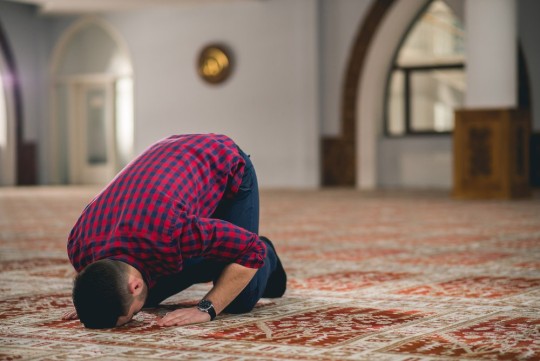
^ This is what prostrating looks like
Sources:
Ocean Keltoi's video on pagan prayers
Hearth and Fire Work's blog post on Hellenic prayer structure
#witchblr#witchcraft#witch tips#deity work#paganism#pagan#polytheism#hellenic pagan#hellenic paganism#hellenic polytheism#norse pagan#norse heathen#norse paganism#heathenry#kemetic paganism#kemetic pagan#celtic pagan#celtic paganism#spirit work
878 notes
·
View notes
Text
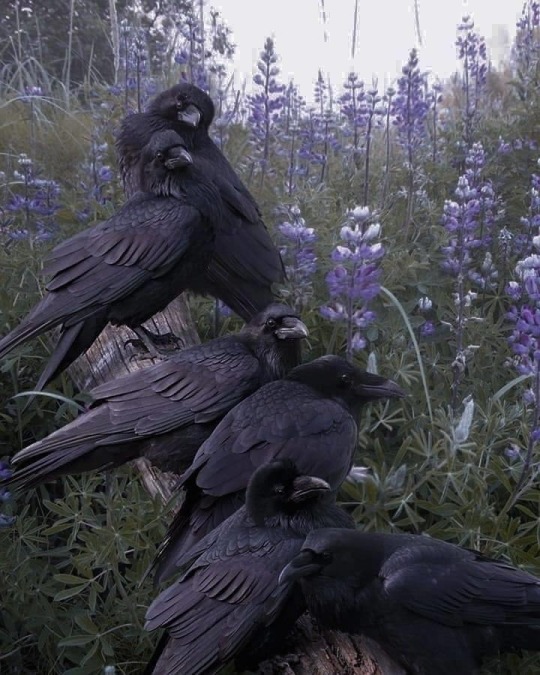

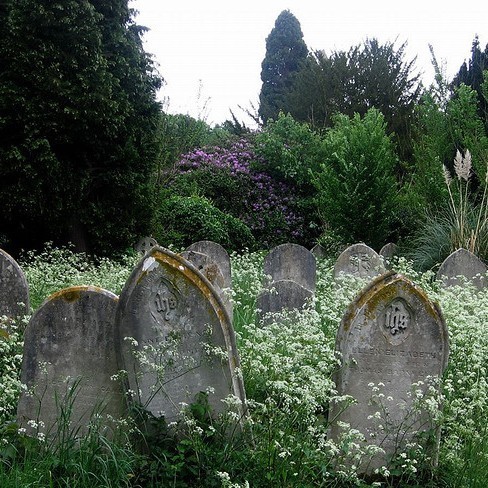
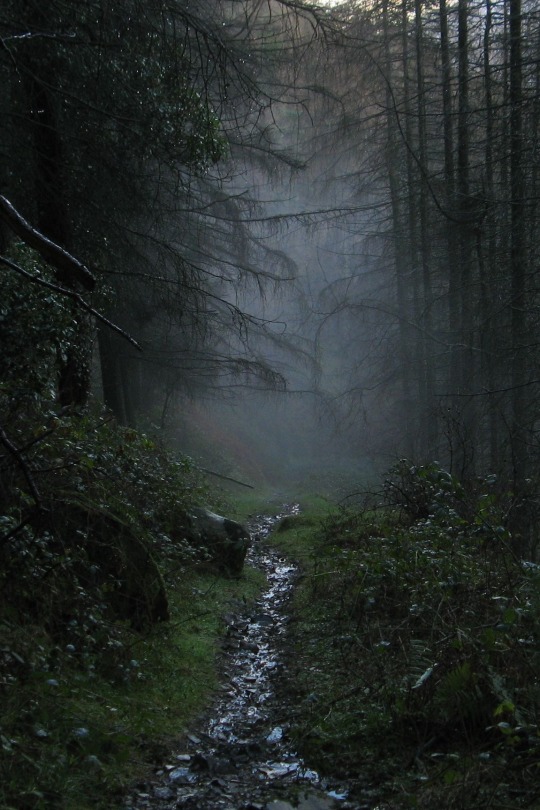
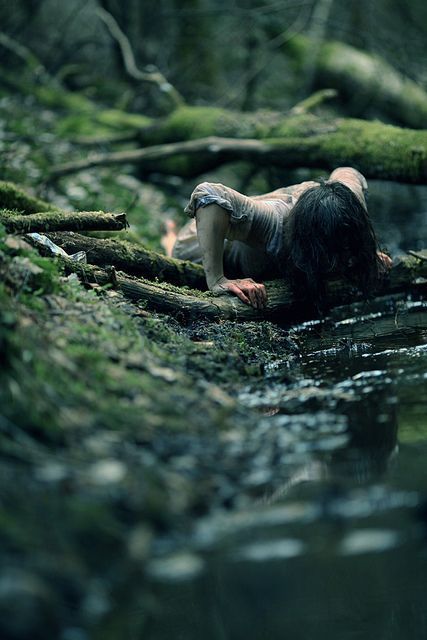

E-offering to Lady Morrigan
#celtic paganism#paganism#pagan#pagan witch#paganblr#witchcraft#witch#witchblr#celtic#morrigan#deity worship#deity devotion#deity
884 notes
·
View notes
Text
𓃶 What Is The Wild Hunt?
The Wild Hunt is a common belief among many Northern European cultures. In short, the hunt is a cavalcade of ghosts, spirits, fairies, elves, and other spiritual beings that is said to sweep across our world every year. Depending on where your beliefs come from, when it happens will differ.
It is commonly believed that the leader of The Wild Hunt is a deity or figure of importance of some kind, such as Odin/Woden in Norse and Saxon traditions, or King Arthur in British lore. Other leaders of the hunt include but are not limited to:
𖤓 Arawn or Gwyn ap Nudd, commonly seen as the Welsh lords of Annwn
𖤓 Danish king Valdemar Atterdag
𖤓 The Norse dragon slayer Sigurd
𖤓 Biblical figures like Cain, Gabriel, Herod and the devil
𖤓 Gothic king Theodoric the Great
☾༺♰༻☽
𓃶 What Did People Do For The Wild Hunt?
The Wild Hunt was generally seen as a bad omen; one for destruction, famine, war, plague, or the death of the one who saw it. In many traditions, witnessing the hunt would result in the viewer being abducted to Otherworld or Underworld. Other times, those who were not protected would have their souls pulled from their bodies while they sleep, and they would join the menagerie of the dead.
To avoid this fate, people in Wales, for example, began the tradition of carving pumpkins as a way to avoid being taken by the fae. In Scandinavia, offerings like bread were put outside the home as an offering to the spirits joining Odin for the hunt.
☾༺♰༻☽
𓃶 When is The Wild Hunt?
Depending on where your beliefs stem from, there are various answers to this question.
In Britain, The Wild Hunt is associated with the autumn season, specifically around and on Samhain/The Autumn Equinox.
Scandinavian tradition tells us that they prepared for the hunt around December, specifically Yule/The Winter Equinox.
☾༺♰༻☽
𓃶 What Entities Are A Part of the Wild Hunt?
Many entities are associated with the Wild Hunt in different areas. These entities include but are not limited to:
𖤓 The Fae (The Sidhe, The Tlywyth Teg, etc)
𖤓 Spirits of the Dead
𖤓 Demons
𖤓 Valkyries
𖤓 The Spirits of Huntsmen or Nobles
𖤓 Horses (sometimes with an abnormal amount of legs)
𖤓 Wolves and dogs (sometimes spiritual in nature, i.e. the Cwn Annwn)
☾༺♰༻☽
#pagan witch#paganism#witchblr#witchcraft#the wild hunt#king arthur#avalon#gwyn ap nudd#arawn#welsh mythology#norse mythology#norse paganism#fairies#fae folk#fae#faerie#ghost#spirituality#celtic paganism
468 notes
·
View notes
Text
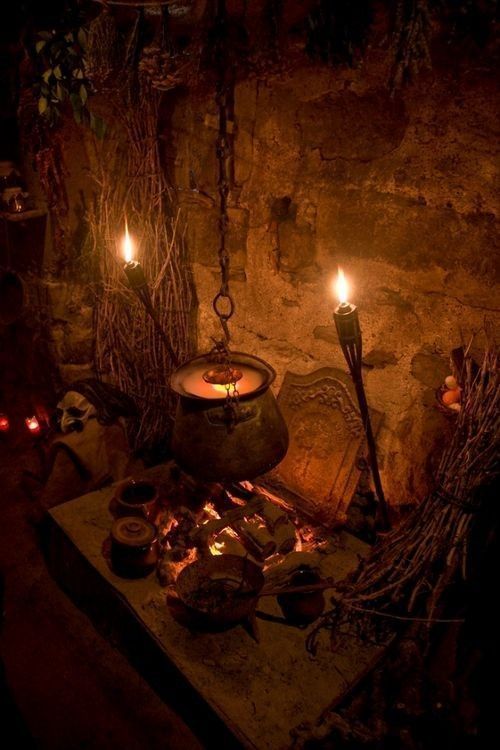
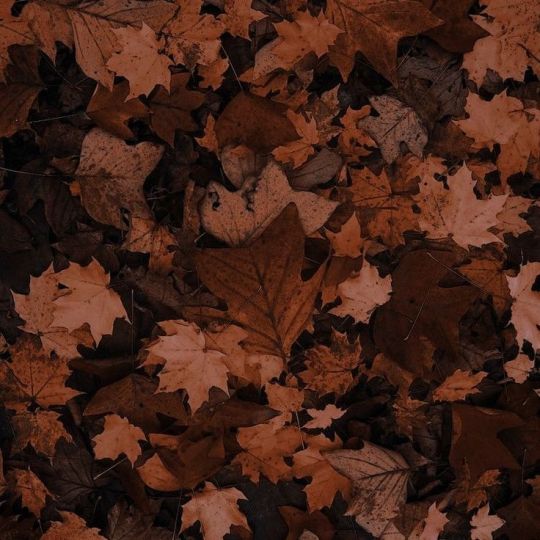


preparing for samhain
#samhain#halloween aesthetic#cosy aesthetic#warmcore#cosycore#autumn#celtic#celtic paganism#paganism#paganblr#witchcraft#witchblr#beginner pagan#halloween#fall aesthetic
486 notes
·
View notes
Text
Important Facts about Samhain from an Irish Celtic Reconstructionist
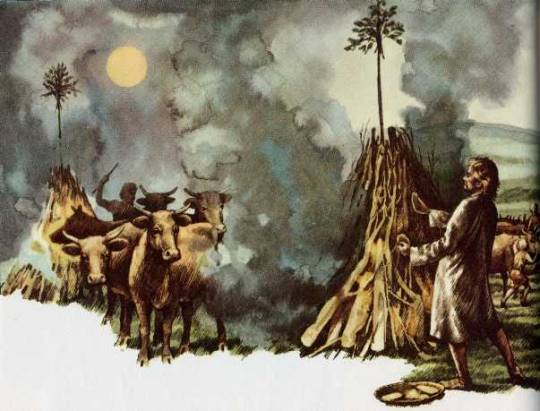
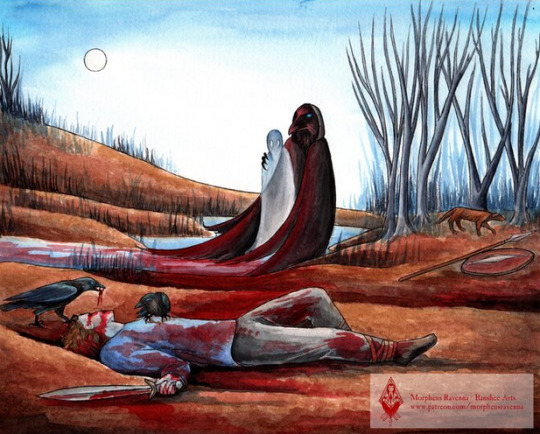

Pronunciation
SOW-in or SOW-een ~NOT~ Sam-han, Sam-win etc.
Dates
Most reconstructionists celebrate Samhain on Oct 31-Nov 1, however some may choose to celebrate on Gregorian Nov 13-14 as this would match the Julian dates of Oct 31-Nov 1. Some also believe that it was a three day festival spanning Oct 31- Nov 2 on which Nov 2 is specifically devoted to ancestral veneration, but there is no specific evidence of this, only possible extrapolation from more modern practices.
Following the Celtic method of days beginning at sunset, regardless of the specific dates you choose to celebrate on your festivities should begin at sunset and end at sunset.
Importance in the Mythos
Ná Morrighan has a strong connection to this time of year thanks to the story of Cath Dédenach Maige Tuired (The Last Battle of Mag Tuired) in which she is found depicted as the ‘Washing Woman’ (sometimes washing herself in the river and other times washing the bloodied armor of the soldiers that would die that day), on the eve of the battle which is also Samhain. The Dagda approaches her and couples with her (creating the ‘Bed of the Couples’ along the bank of river and granting Dagda her blessing in the battle to come). This encounter seems to over emphasize the liminality of the encounter by taking place during the changing of the year and with the couple each standing with ‘one foot on either bank’ of the river.
She and her sisters (Badb and Macha) then use various forms of magic to rain destruction on their enemies (in the form of fire and blood). After the day is won Morrighan speaks a prophecy that describes what is taken by some to be the end of days and others to be the events which will later lead to the Ulster Cycle.
Beneath the peaceful heavens lies the land.
It rests beneath the bowl of the bright sky.
The land lies, itself a dish, a cup of honeyed strength, there, for the taking, offering strength to each
There it lies, the splendour of the land.
The land is like a mead worth the brewing, worth the drinking.
It stores for us the gifts of summer even in winter.
It protects and armours us, a spear upon a shield
Here we can make for ourselves strong places, the fist holding the shield
Here we can build safe places, our spear-bristling enclosures.
This is where we will turn the earth. This is where we will stay.
And here will our children live to the third of three generations
Here there will be a forest point of field fences
The horn counting of many cows
And the encircling of many fields
There will be sheltering trees
So fodderful of beech mast that the trees themselves will be weary with the weight.
In this land will come abundance bringing:
Wealth for our children
Every boy a warrior,
Every watch dog, warrior-fierce
The wood of every tree, spear-worthy
The fire from every stone a molten spear-stream
Every stone a firm foundation
Every field full of cows
Every cow calf-fertile
Our land shall be rich with banks in birdsong
Grey deer before Spring
And fruitful Autumns
The plain shall be thronged from the hills to the shore.
Full and fertile.
And as time runs its sharp and shadowy journey, this shall be true.
This shall be the story of the land and its people
We shall have peace beneath the heavens.
Forever
(based on the translation by Isolde Carmody)
It is also mentioned in Echtra Cormaic that on this festival every seven years the high king would host a feast, it was at this time new laws could be enacted. (but it seems that individual Tuathas or possibly kings of the individual providence may have done this for their territories at Lughnasadh).
It seems to be a time considered especially susceptible to (or of) great change as it is the time which the Tuatha de Danann win victory over the Formorians and take control of Ireland, the invasion of Ulster takes place at this time in Táin bo Cúailnge, in Aislinge Óengusa Óengus and his bride-to-be are changed from bird to human and eventually he claims kingship of Brú na Bóinne at this time of year.
Celebration Traditions
Samhain is the beginning of the “dark half” of the year and is widely regarded as the Insular Celtic equivalent of the New Year. The “dark half” of the year was a time for story telling, in fact in this half of the year after dark is considered the only acceptable time to tell stories from the mythological and Ulster cycle (the Fenian cycle being assumed to be no older than the 12th century based on linguistic dating). Traditionally anything that had not been harvested or gathered by the time of this festival was to be left, as it now belonged to the Fae (in some areas specifically the Púca).
This was also an important time for warding off ill luck in the coming year. Large bonfires would be built and as the cattle were driven back into the community from the pastures they would be walked between these bonfires as a method of purification (the reverse custom of Bealtaine where the livestock were walked between the fires on their way out to the summer pastures). Assumed ritualistic slaughter of some of the herd would follow (though this perhaps had the more practical purpose of thinning the herd before the winter and creating enough food for the feasting). In some areas the ashes from these fires would be worn, thrown or spread as a further way to ward off evil.
Homes would be ritualistically protected from the Aos Sí (Fae or ‘Spirits’) through methods such as offerings of food (generally leaving some of the feasting outside for them), carving turnips with scary faces to warn them off (we now tend to do this with gourds), and smoke cleansing the home (in Scottish saining) traditionally with juniper, but perhaps rowan or birch might be an acceptable alternative. It is likely these would be part of the components used in Samhain bonfires as well, for the same reason.
Lastly based on later traditions as well as links in the mythology this is a time where divination practices or those with the ‘second sight’ were regarded to be especially potent.
Art Credit @morpheus-ravenna
#samhain#irish#irish mythology#irish polytheism#irish paganism#celtic reconstructionism#celtic paganism#celtic polytheism#na morrigna#the morrígan#the dagda#fire festival#blackcrowing#Irish reconstructionist
446 notes
·
View notes
Text




Lucky enough to watch this beautiful show
#pagan witch#witchcraft#celtic paganism#witch community#celtic#magick#cernunnos#nature photography#photography#eclipse#sky#sun and moon show
166 notes
·
View notes
Text
fhsksvjags seeing people saying that the 'cryptids' of Europe are harmless and I'm 👁👄👁 are we talking about the same Europe
people on tiktok are trying so hard to convince u the fae are harmless but that's Victorian Propaganda and I stand by that
2K notes
·
View notes
Text
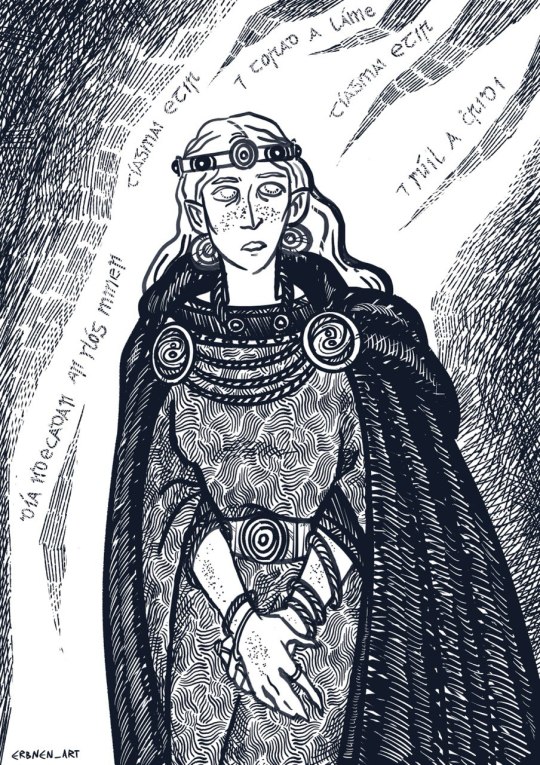
A commission of Brigid for @bloodtreachery (awww, it was SUCH a pleasure to do it!). I put an emphasis on her aspect as a poet, hence the fire of poetry ablaze!
The poem in the flames is a liberal translation of these lines from The Hosting of the Sidhe into Old Irish (courtesy of my wonderful husband):
...if any gaze on our rushing band,
We come between him and the deed of his hand,
We come between him and the hope of his heart.
#artists on tumblr#irish mythology#brighid#brigid#celtic paganism#gaelpol#paganblr#pagan art#illustration#commission#commissions open#tuatha de danann#irish goddesses#goddess brigid#druidism#celtic deities#aodhan erbnen
328 notes
·
View notes
Text
The Ultimate Deity Journal Guide
Similar to my grimoire guide, this is a guide on deity journals.
What Is A Deity Journal?
A deity journal is a journal dedicated to a deity. It’s filled with information, offerings, devotional pieces, etc. If you like journaling or can’t give other physical offerings (like food, libations, etc.), it’s one of the best offerings out there.
What Do I Use For It?
Usually deity journals are physical journals and notebooks. Binders and folders work as well. I have seen deity journals online, using things like Notion or Google Docs. Those are a little harder to format, but are great if you don’t have a notebook or aren’t a fan of physical journals.
So, What Do I Put In It?
Devotional Artwork
Devotional Playlists
Pressed/Dried Flowers or Herbs
Prayers
Devotional Poems or Stories
Myths
Recipes
Stickers
Experiences or Dreams
Photos
The Basics (Name, Epithets, Domains, Family, Associations, Holidays, Symbols, Sacred Days, Sacred Animals, Etc.)
Spells/Rituals That You Want To Or Have Done With Them
Offerings And Devotional Act Ideas
Journal Prompts
Magazine/Book Cutouts
Hymns
Shopping List (Things You Want To Buy For Them)
Fabric Scraps
Letters To Them
Divination Readings With Them
Coins Or Other Currencies
How You Celebrate (Or Plan To) Holidays Or Sacred Days With Them
UPGs
Altar Plans (Drawings Or Descriptions Of Altar Ideas)
Incense, Herb, And Oil Blends
Drops Of Wax, Wine, Etc.
Seed Packets
Blessings
Charms
Charm/Spell Bags
Travel Plans (Places You Want To Go For Your Deity)
Maps That Remind You of Them
Sigils Dedicates To Them
Superstitions Related To Them
Research On Their Birth Place
Devotional Jewelry Charging Station
Affirmations Dedicated/Influenced By Them
Small Sticks Or Branches
Book Annotations
Divination Techniques Related To Them
Relationship Goals (Better Communication, More Signs, Etc.)
Their Associated Rune/Tarot Card/Etc.
Teas And Tea Blends
Folklore/Mythology Entities Related To Them
Vision Board
Goals
Diary Entries And Rants
Taglocks
Paper/Straw/Etc. Dolls
Doodles
References/Further Reading
#deities#witchcraft#baby witch#beginner witch#witch#witchy#witchblr#helpol#hellenism#norse paganism#celtic paganism#slavic paganism#kemetism#kemeticism#Kemetic#hellenic#hellenic witch#deity#deity work#deity worship#worship#devotional act#offering#devotional journal#witches#witchery#devotion#deity devotion
732 notes
·
View notes
Photo
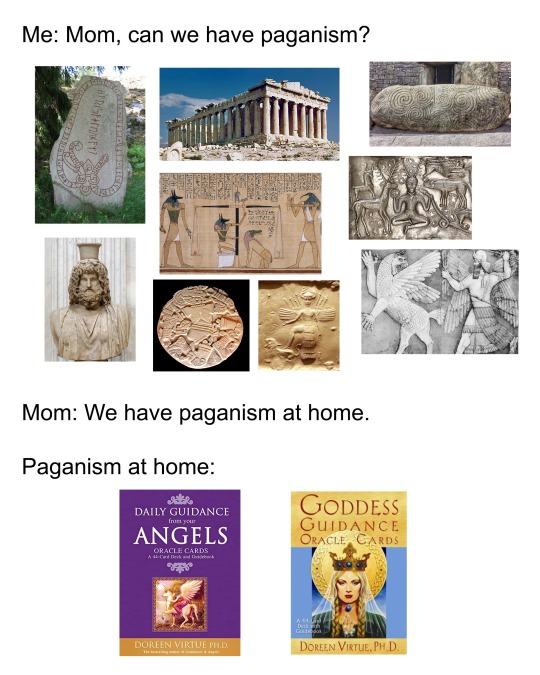
#pagan memes#paganism#neopaganism#memes#hellenic paganism#hellenic polytheism#helpol#norse paganism#asatru#egyptian paganism#kemeticism#mesopotamian mythology#sumerian#celtic paganism#doreen virtue
738 notes
·
View notes
Text
I love that Celtic mythology and paganism are open but I implore people to pleeeease learn from actual Irish people teaching the culture and remember that these are still indigenous practices that have been nearly erased by colonialism.
#witchblr#witches of tumblr#witchcraft#witch community#pagan#paganism#neo pagan#celtic paganism#irish paganism
224 notes
·
View notes
Text
witches and pagans: there is so much we can do for Palestine
even if we don’t share the same faith- our prayer, rituals, and spells are powerful. our gods and spirits and ancestors have the power to intervene on our behalf, all we have to do is ask. they don’t take kindly to oppression, or politicians propping up genocidal regimes.
especially right now on Samhain, the veil is thin, and it’s the best time of the year to connect with the spiritual realm and the divine, and ask them for help. or take it into your hands- spells, hexes, prayers, and divinations, any and all of the above.
witches have done it before, we’ve helped to change the course of history. we can do it again.
#if enough of us can gather to... hex the moon… just imagine what we could do to bring safety and peace to Palestine#tagging so it reaches the relevant spaces ->#witchcraft#paganism#witchblr#paganblr#pagan#norse pagan#celtic paganism#kemetism#lokean#palestine#druid#magick#spells#samhain#polytheism#polytheist#helpol#hellenic polytheism#hellenic pagan#norse gods#norse paganism#pagan witch#wicca#tarot#kemetic pagan#heathenry#witchtok#p
201 notes
·
View notes
Text
Low energy offerings for The Morrigan
- light a candle in her honor
- leave a food offering for her
- wash your face and/or hands
- pick up any litter
- do some shadow work
- donate money to food shelters or expecting mothers
- let some anger out in a healthy way(break plates, rage room, etc)
- read about her mythology
- put some bird food out

#pagan witch#polytheism#paganism#pagan#pagan community#paganblr#pagans of tumblr#witch#witches#deity worship#witchcraft#deities#deity devotion#the morrigan#morrigan#celtic#celtic paganism
234 notes
·
View notes
Text
𓃶 Hearth Magic 101
⛤ Please note!!! this post will contain my personal gnosis at some points. Magic is intimately personal and everyone’s practice is different. You may agree or disagree with me at any point during this post. However, while I am sharing this to be educational, please keep in mind that this is my personal outlook on this subject ♡
☾༺♰༻☽
𓃶 What Is Hearth Magic?
Hearth Magic, at its core, is magic of the home. This kind of magic differs greatly between families, cultures and traditions. When starting Hearth Magic, you must take a moment to really think about what home is to you. Your hearth can be anywhere, but generally, the hearth is seen as a place of comfort, growth, and rest.
Taking care of your home has always been important and even sacred for many people. Taking care of it magically is just another way of respecting this place that takes care of you. Your home is somewhere that protects you and those you invite in. Personally, Hearth Magic is almost like showing your gratitude to this familiar place. I would suggest doing research into how the home is taken care of in your own cultures, or watch how others in your life take care of their home and take notes!
☾༺♰༻☽
𓃶 How can I Practice Hearth Magic?
Just like any kind of magic, Hearth Magic will be something you incorporate into your practice in your own ways. To get started, however, here are some things you can do to:
⛤ Get into the habit of cleansing your space. This can be your whole home, or just the one specific place you consider the hearth (a bedroom, living space, kitchen, fireplace etc). You can also cleanse while doing day to day chores! incorporate moon water or intention while washing dishes, or do an herb sweep when cleaning your floors. Brooms are also important magical tools!
⛤ Try a house or home blessing/spell. For me, I made a large spell jar and incorporated ingredients commonly used in my family’s cooking, our yard, and local herbs/herbs we use a lot. This can be used as an invitation for positive energy, or a ward against negativity. This will really help set the energy of the space.
⛤ Start incorporating magic into your cooking. Kitchen magic is an easy and convenient way to keep your life a little more magical. Try adding herbs to sauces with intention, or cook in honor of spirits or deities. Easy foods to incorporate kitchen magic into (at least personally!) include sauces, soups, baked goods, and pasta dishes.
⛤ Start to decorate your home in a way that makes you happy. This doesn’t have to be any specific aesthetic; just making your space somewhere you enjoy being through decor adds to the energy!
⛤ If you like spirit work, consider the possibility that, if you live in a house, there may be a house spirit attached to the space. This can give you an extra opportunity to connect to this space and the spirits within it by honoring this entity.
☾༺♰༻☽
⛤ In all, Hearth Magic can be a very grounding and important part of your magical path if you plan to practice it. It allows you to really grow in a familiar and comfortable space, as well as providing you with a comfortable place to come back to every day, even for mundane life. ♡
☾༺♰༻☽
#pagan witch#paganism#witchblr#witchcraft#celtic paganism#witches#hearth magic#home magic#kitchen magic#kitchen witch#witchy community#witch#deity witchcraft#spirituality#spirit work
315 notes
·
View notes